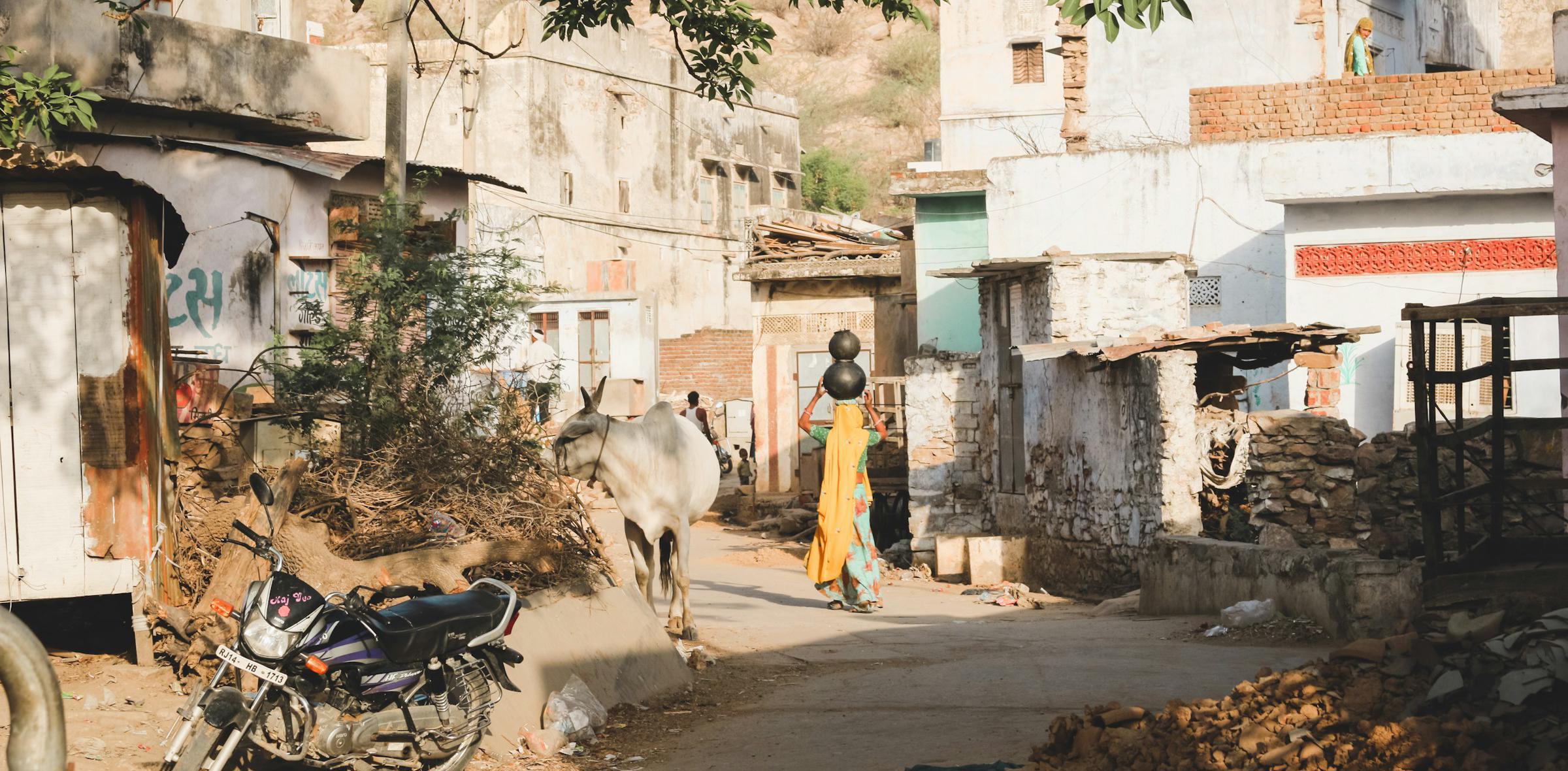Chennai growth maps blueprint for rural-urban areas in Global South – University of Birmingham
Chennai growth maps blueprint for rural-urban areas in Global South University of Birmingham


A New Approach to Understanding Urban Sprawl for Better Urban Planning

Introduction
The ongoing growth of a major Indian city has helped experts to create a new way of understanding how ‘urban sprawl’ happens – providing potential to improve people’s lives across the Global South through better urban planning.
Research Analysis
Researchers analysed the development of communities on the edge of Chennai, in South India, where urban and rural areas meet – known as the ‘peri-urban’ – to develop an approach that is tailored to the needs of India and other countries in the Global South.
Despite a trend towards urbanisation, 69% of India’s population is still classified as rural. Whilst Western planning efforts have been directed towards maintaining a distinct urban-rural divide, up to 140 million people live in India’s ‘grey zone’ settlements which display both urban and rural characteristics.
Findings
An international group of researchers has published its findings in Habitat International, after examining the rise of peri-urban regions within St Thomas Mount Panchayat Union – 15 villages on the fringes of Chennai.
The researchers have developed a process that redefines the dynamics of such areas as the ‘peri-urban turn’ using Causal Loop Diagrams to map the connections between health, place, demographics, governance, and economy.
Importance of Peri-Urbanisation
Co-author Rahib Akhtar, from the University of Birmingham, commented: “With the rapid pace of urbanisation, urban sprawl has become a prevalent phenomenon in the global South. This has created peri-urban spaces where city meets country – offering interactions between social, economic, and environmental systems that give valuable insight into how we can create better and more sustainable futures for the people living in these communities.
“Peri-urbanisation can provide a way of better understanding the dynamics between urban and rural areas in India and the wider Global South. By examining peri-urbanisation, we can gain a contextual understanding of the socio-spatial processes that shape urban and rural futures.”
Ambiguity in Urban-Rural Classification
Apart from a lack of clarity in urban-rural classification in India, there is also ambiguity around the transformation and development of urban and rural areas. Confusion exists around the definition of such areas with terms including ‘urban village’, ‘desakota’ (village-town), Predominantly Urban, Semi-Urban, and Potential Urban areas.
The ambiguity surrounding the demarcation of urban and rural areas, combined with the complexities of local governance structures, creates challenges in understanding trends and patterns in India, with implications for people’s aspirations, opportunities, challenges, and the need to migrate.
SDGs, Targets, and Indicators in the Article
1. Which SDGs are addressed or connected to the issues highlighted in the article?
- SDG 11: Sustainable Cities and Communities
- SDG 1: No Poverty
- SDG 8: Decent Work and Economic Growth
- SDG 3: Good Health and Well-being
- SDG 10: Reduced Inequalities
The article discusses the development of peri-urban areas in Chennai, India, and the challenges and opportunities they present. These issues are directly connected to SDG 11, which focuses on creating sustainable cities and communities. Additionally, the article mentions poverty (SDG 1), economic growth (SDG 8), health (SDG 3), and inequalities (SDG 10) as factors influenced by urban sprawl and peri-urban development.
2. What specific targets under those SDGs can be identified based on the article’s content?
- SDG 11.1: By 2030, ensure access for all to adequate, safe, and affordable housing and basic services and upgrade slums.
- SDG 11.3: By 2030, enhance inclusive and sustainable urbanization and capacity for participatory, integrated, and sustainable human settlement planning and management in all countries.
- SDG 1.4: By 2030, ensure that all men and women, in particular the poor and the vulnerable, have equal rights to economic resources, as well as access to basic services, ownership, and control over land and other forms of property.
- SDG 8.3: Promote development-oriented policies that support productive activities, decent job creation, entrepreneurship, creativity, and innovation.
- SDG 3.8: Achieve universal health coverage, including financial risk protection, access to quality essential health-care services, and access to safe, effective, quality, and affordable essential medicines and vaccines for all.
- SDG 10.2: By 2030, empower and promote the social, economic, and political inclusion of all, irrespective of age, sex, disability, race, ethnicity, origin, religion, or economic or other status.
Based on the article’s content, the targets mentioned above are relevant to address the issues related to urban sprawl and peri-urban development.
3. Are there any indicators mentioned or implied in the article that can be used to measure progress towards the identified targets?
Yes, there are indicators mentioned or implied in the article that can be used to measure progress towards the identified targets. However, the article does not provide specific indicators. To measure progress towards the identified targets, indicators such as the percentage of population with access to adequate housing and basic services, the number of slums upgraded, the level of inclusivity in urbanization and human settlement planning, the percentage of population with equal rights to economic resources and access to basic services, the number of decent jobs created, the level of universal health coverage achieved, and the extent of social and economic inclusion can be used.
Table: SDGs, Targets, and Indicators
| SDGs | Targets | Indicators |
|---|---|---|
| SDG 11: Sustainable Cities and Communities | 11.1: By 2030, ensure access for all to adequate, safe, and affordable housing and basic services and upgrade slums. | Percentage of population with access to adequate housing and basic services, number of slums upgraded |
| SDG 11: Sustainable Cities and Communities | 11.3: By 2030, enhance inclusive and sustainable urbanization and capacity for participatory, integrated, and sustainable human settlement planning and management in all countries. | Level of inclusivity in urbanization and human settlement planning |
| SDG 1: No Poverty | 1.4: By 2030, ensure that all men and women, in particular the poor and the vulnerable, have equal rights to economic resources, as well as access to basic services, ownership, and control over land and other forms of property. | Percentage of population with equal rights to economic resources and access to basic services |
| SDG 8: Decent Work and Economic Growth | 8.3: Promote development-oriented policies that support productive activities, decent job creation, entrepreneurship, creativity, and innovation. | Number of decent jobs created |
| SDG 3: Good Health and Well-being | 3.8: Achieve universal health coverage, including financial risk protection, access to quality essential health-care services, and access to safe, effective, quality, and affordable essential medicines and vaccines for all. | Level of universal health coverage achieved |
| SDG 10: Reduced Inequalities | 10.2: By 2030, empower and promote the social, economic, and political inclusion of all, irrespective of age, sex, disability, race, ethnicity, origin, religion, or economic or other status. | Extent of social and economic inclusion |
Behold! This splendid article springs forth from the wellspring of knowledge, shaped by a wondrous proprietary AI technology that delved into a vast ocean of data, illuminating the path towards the Sustainable Development Goals. Remember that all rights are reserved by SDG Investors LLC, empowering us to champion progress together.
Source: birmingham.ac.uk

Join us, as fellow seekers of change, on a transformative journey at https://sdgtalks.ai/welcome, where you can become a member and actively contribute to shaping a brighter future.







